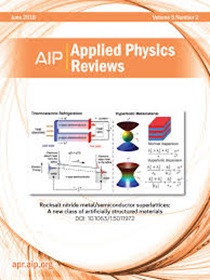髂动脉离体血管内血栓形成模型的无线机械和混合血栓碎裂
IF 11.6
1区 物理与天体物理
Q1 PHYSICS, APPLIED
引用次数: 0
摘要
本研究探讨了无系绳磁性机器人(UMR)在离体组织环境中无线机械和混合血凝块去除的功效。通过将x射线引导的无线操作与umr相结合,我们的目标是解决与精确和可控血凝块干预相关的挑战。这些机器人不受束缚的性质和尺寸增强了在复杂血管网络中的机动性和可达性,潜在地提高了血块去除效率。我们探索了机械碎裂、化学裂解和混合溶解技术,这些技术将机械碎裂和化学裂解结合起来,突出了它们在靶向和有效去除血凝块方面的潜力。通过对绵羊髂动脉内离体血管内血栓形成模型的实验验证,我们证明了位于左髂总动脉内的13mm长、1天大的血凝块的直接血运重建。这是通过在15分钟内将UMR置入腹主动脉实现的。此外,与不干预(对照)和单独化学溶解相比,机械碎裂和混合溶解都能实现更大的体积变化率。机械碎裂法去除血块的中位数为0.87 mm3/min,范围为2.81 mm3/min,而混合方法去除血块的速度较慢,但更一致,中位数为0.45 mm3/min,范围为0.23 mm3/min。本文章由计算机程序翻译,如有差异,请以英文原文为准。
Wireless mechanical and hybrid thrombus fragmentation of ex vivo endovascular thrombosis model in the iliac artery
This study investigates the efficacy of an untethered magnetic robot (UMR) for wireless mechanical and hybrid blood clot removal in ex vivo tissue environments. By integrating x-ray-guided wireless manipulation with UMRs, we aim to address challenges associated with precise and controlled blood clot intervention. The untethered nature and size of these robots enhance maneuverability and accessibility within complex vascular networks, potentially improving clot removal efficiency. We explore mechanical fragmentation, chemical lysis, and hybrid dissolution techniques that combine mechanical fragmentation with chemical lysis, highlighting their potential for targeted and efficient blood clot removal. Through experimental validation using an ex vivo endovascular thrombosis model within the iliac artery of a sheep, we demonstrate direct revascularization of a 13-mm-long, 1-day-old blood clot positioned inside the left common iliac artery. This was achieved by deploying a UMR into the abdominal aorta within 15 min. Additionally, both mechanical fragmentation and hybrid dissolution achieve a greater volume rate of change compared to no intervention (control) and chemical lysis alone. Mechanical fragmentation exhibits clot removal with a median of 0.87 mm3/min and a range of 2.81 mm3/min, while the hybrid approach demonstrates slower but more consistent clot removal, with a median of 0.45 mm3/min and a range of 0.23 mm3/min.
求助全文
通过发布文献求助,成功后即可免费获取论文全文。
去求助
来源期刊

Applied physics reviews
PHYSICS, APPLIED-
CiteScore
22.50
自引率
2.00%
发文量
113
审稿时长
2 months
期刊介绍:
Applied Physics Reviews (APR) is a journal featuring articles on critical topics in experimental or theoretical research in applied physics and applications of physics to other scientific and engineering branches. The publication includes two main types of articles:
Original Research: These articles report on high-quality, novel research studies that are of significant interest to the applied physics community.
Reviews: Review articles in APR can either be authoritative and comprehensive assessments of established areas of applied physics or short, timely reviews of recent advances in established fields or emerging areas of applied physics.
 求助内容:
求助内容: 应助结果提醒方式:
应助结果提醒方式:


